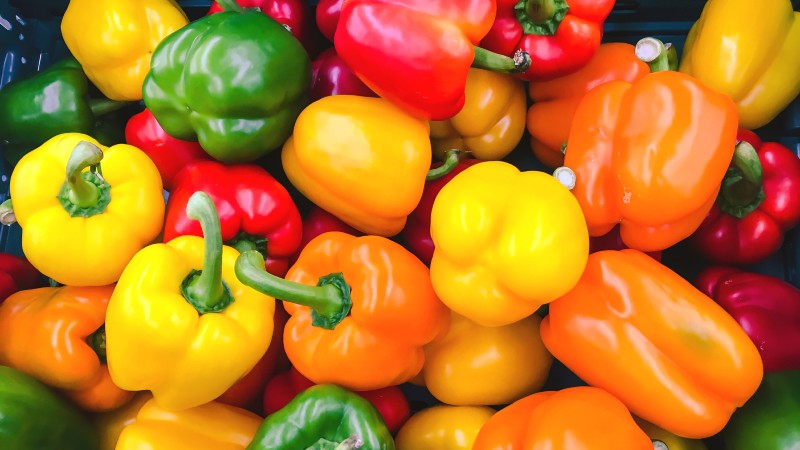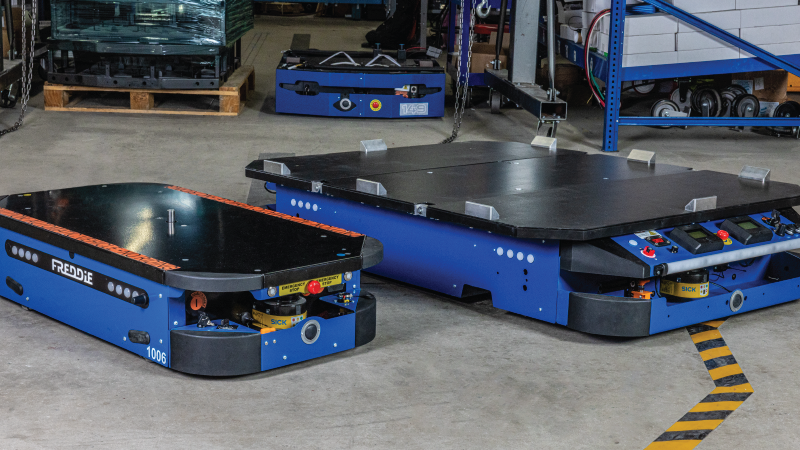The global supply chain is complex and rife with challenges, and in many ways, those challenges are often amplified within the food supply chain.
Quality, freshness, food safety, and waste reduction are critical factors that impact the bottom line for food chain stakeholders including growers, processors, distributors, and retailers (whether restaurant or retail). Barcode-based systems leveraging GS1 standards have already proven to deliver vast improvements over pen-and-paper or other manual-based food traceability and tracking solutions.
RAIN RFID systems offer another efficiency improvement by incorporating IoT sensor data while eliminating the need for line-of-sight and streamlining process automation. As the global food supply chain continues to expand in complexity, RAIN RFID systems can help eliminate errors associated with manual intervention, enable more accurate and responsive record-keeping, through GS1 data sharing standards. All together that can mean a safer, more efficient food supply chain.
In this article, we’ll introduce a few important developments in RAIN RFID technology as it’s being applied to food track-and-trace systems. In future blog posts, we’ll dive deeper into the details of each, but here are five critical considerations for food supply chain stakeholders:
- Impending FDA-driven food safety rule changes increase record-keeping burdens
- Consumers drive demand for greater product transparency
- Reducing food loss and waste at distribution and retail
- Cost-benefit considerations for RFID versus barcoding systems
- Future expectations and evolution in the food supply chain
1. FDA Rule Changes & Regulatory Compliance
In 2020, the Food and Drug Administration (FDA) released a new Proposed Rule for Food Traceability, which is slated to become part of the Food Safety Modernization Act (FMSA 204). The rule changes are slated to be finalized and published in the Federal Register by November 7, 2022, and are expected to go into effect January 2025.
An important part of the proposed rule is the requirement for companies that grow, process, pack, hold or distribute foods on the Food Traceability List to generate and maintain records containing Key Data Elements (KDEs) associated with Critical Tracking Events (CTEs).
The FDA describes KDEs associated with growing, receiving, transformation (i.e., processing), creation, and shipping of foods. The sheer volume of KDEs calls for a solution that delivers efficiency and accuracy to record-keeping without increasing workloads.
CTEs (Critical Tracking Events) are events recorded throughout the supply chain such as shipping, receiving, commingling, sale, and waste disposal.
KDEs (Key Data Elements) include information such as growing area coordinates; import entry number; date, time, and location of shipment, receipt, or processing; name of transporter; etc.
2. Consumer-Driven Demand for Product Traceability
Widely known as Farm to Fork, initiatives that closely track food from its point of origin to the consumer not only enable quicker response to issues like food recalls, but they also offer opportunities to add value and respond to consumer interest.
Automating data collection by integrating IoT sensors and RAIN RFID tags and labels enables food brands to create robust and accurate records of the lives of their products.
For the consumer, this means much greater on-demand transparency about food provenance, farming and processing practices (such as organic or sustainable agriculture, or humane livestock husbandry), carbon footprint, water consumption, fair trade, labor practices, and more. Right at the retail shelf, the consumer can scan a Data Matrix (2-D) barcode or “tap” an NFC tag on the product package or label to access data provided online by the brand that illustrates a detailed depiction of the product’s journey from point of origin to point of sale.
3. Food Loss & Waste Reduction at Distribution & Retail
The USDA and EPA both recognize the enormous opportunity presented by the volume of food that’s wasted before it even reaches consumers. It’s a complex problem that requires multi-pronged solutions—and the efficient, accurate digital records that become possible by incorporating IoT and RAIN RFID can help distributors and retailers handle and manage inventory more proactively.
Real-time visibility into sell-by dates and freshness information can help distributors and retailers optimize stocking and product rotation to prevent out-of-order stocking that can lead to loss and spoilage (also known as First Expiry First Out, or FEFO). This not only helps prevent stock-outs of fresh foods, but it also helps grocers minimize markdowns and shrink. In an industry known for narrow product margins, that visibility can measurably boost profitability.
4. Cost-Benefit Considerations: Is RFID Better than a Barcode System?
Should every producer, processor, distributor, and retailer start RFID implementation now? The answer to this question isn’t necessarily straightforward or simple. Considerations can include details like production volumes, complexity of processing and distribution logistics, fragility and value of products, and a company’s starting point.
Going from pencil-and-paper to a barcode label and handheld scanner system can take a company’s data leaps forward. But for some businesses, the added leap that RAIN RFID makes possible with automation can drastically reduce labor demands, vastly improve accuracy and efficiency, and make the extra investment pay off quickly. Automated inventory validation and verification that can achieve accuracy as high as 99% can help minimize shipment disputes and chargebacks, for lower operational costs.
Even in smaller implementations, a handheld RFID device can improve cycle counting operations and introduce visibility into item-level serialized data—something that’s just not possible with a standard one-dimensional barcode. And for the smaller business receiving products with RAIN RFID tags or labels already applied, that investment may not be too daunting. As more companies deploy RFID technologies in their operations and adopt global standards for their use, the rising tide of RAIN RFID really has the potential to lift all ships.
5. Forward-Looking Expectations & Continued Food Supply Chain Evolution
IoT and RAIN RFID’s future in the food supply chain may initially be driven by the technology’s effectiveness in helping achieve compliance with FSMA 204. But food safety compliance is just the tip of the iceberg when it comes to stakeholder benefits these systems can deliver.
As tightening environmental standards drive carbon footprint reductions and other sustainability goals, RAIN RFID can deliver even more value to users. Tracking reusable transport items (RTIs) to reduce single-use packaging materials, gathering real-time data on shipments, tracking effectiveness of food waste reduction efforts, and other efficiencies all fall squarely within IoT and RAIN RFID’s capabilities.
More widespread adoption, along with improvements in network infrastructure and connectivity, will increase opportunities to access IoT sensor data and monitor products at more touchpoints along the supply chain.
They’ll also likely push the capabilities to the point where producers, processors, distributors, and retailers may need to consider how to best use the data, as well as just how much information they want to share with consumers. Control over the level of transparency may become a key question companies face, as the capability to collect and record information becomes a challenge left in the past.
Learn about the highest-impact supply chain and distribution applications for RFID. Download our free guide, The Wide-Ranging Impact of RFID on the Supply Chain. Click the link below to get your copy today.







